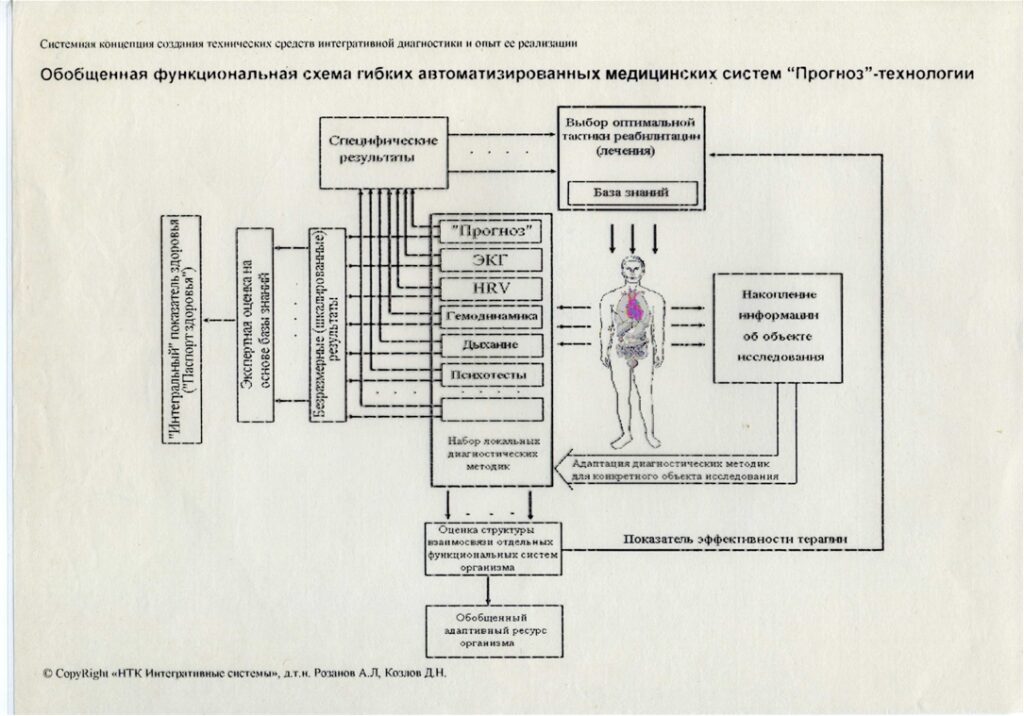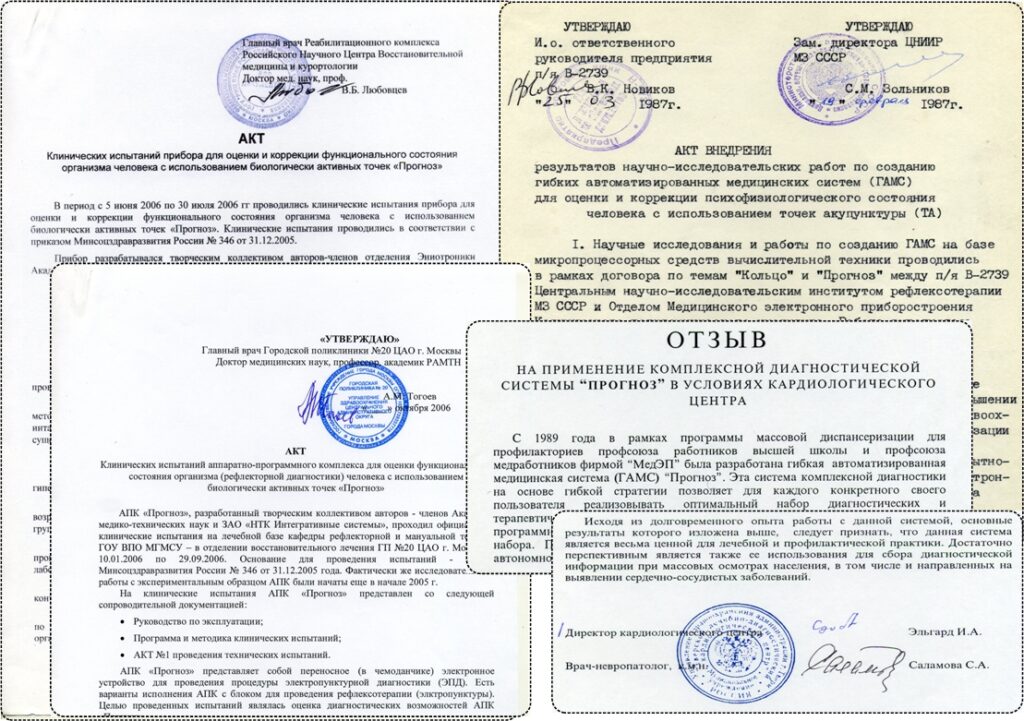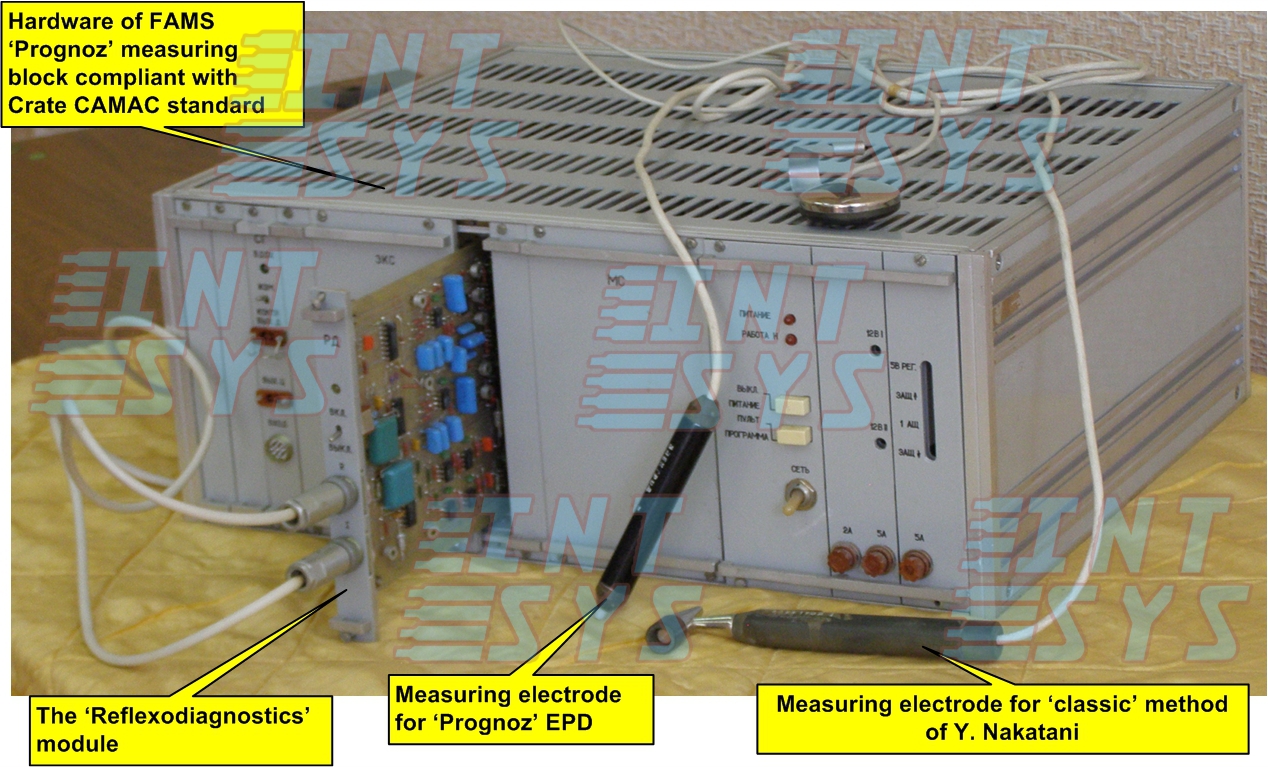Development History of 'Prognoz' in brevi
Initially, the staff of NTK Integrative Systems was involved in the development of automated medical systems (AMS) for use in mass periodic screenings.
This concept implied, on the one hand, a large number of specific diagnostic methods (e.g. ECG, spirometry etc.), which combined would provide a comprehensive representation of a person’s condition, mainly for the purpose of early problem detection and subsequent follow-up care. In addition, this methodology assumed the 'openness' of such AMS i.e. the possibility of embedding new promising ‘specific diagnostic techniques’ into it.
On the other hand, the task was to optimize the diagnostic process, which made it reasonable to use the so-called methods of ‘holistic diagnosis’, the results of which determined the strategy for further diagnostic studies. Thus it was possible to formulate the concept of ‘flexible AMS’, or FAMS. In particular, such ‘flexibility’ was required for:
- optimization of the work time of medical personnel conducting diagnostic studies;
- designation of clear guidelines for further in-depth diagnostic studies.
These were the primary ideas for using EPD as part of FAMS. The correctness of this direction was confirmed by a significant number of positive reviews.
For this purpose, the Reflexodiagnostics module (pictured below) was used in the initial design conducted jointly with 'Deiton' Central Design Bureau (see pic.)
that implemented two EPD methods: the 'classic' Ryodaraku diagnostics by Y. Nakatani and the original EPD method from the Department of Medical Electronic Instrumentation (OMEP) of Kalinin Polytechnics Institute. By that time, the methodology developed by OMEP had already sufficiently proven itself, including in the conditions of a real space flight, and was constantly being improved. The combination of the above EPD methods was supposed to be used as an integrating link of the FAMS ‘Prognoz’: Ryodoraku for a static single assessment of a person’s functional state, and the OMEP method (named 'Prognoz' EPD) – to assess the effect of various prophylactic measures.
The results of trial operation of ‘Prognoz’ FAMS with EPD as an integrating link aroused high interest among domestic and foreign customers,
amplified by the “economics conversion” concept declared at that time.
As involvement of NTK ‘Integrative Systems’ in international cooperation increased, ideas appeared about exporting ‘Prognoz’ FAMS abroad. In order to rationally use the extant resources and preserve elements of corporate secrecy, the export was supposed to be based on a modular principle, and this approach was tested on the 'Prognoz' EPD module as the most exraordinary element of the system. The experiment turned out to be a success, and ‘Prognoz’ EPD was adopted in a number of foreign countries, Western and otherwise. The module was further improved using Western hardware components and adapted to the local specifics of application. Since then, NTK Integrative Systems has become heavily oriented on ‘Prognoz’ EPD.




